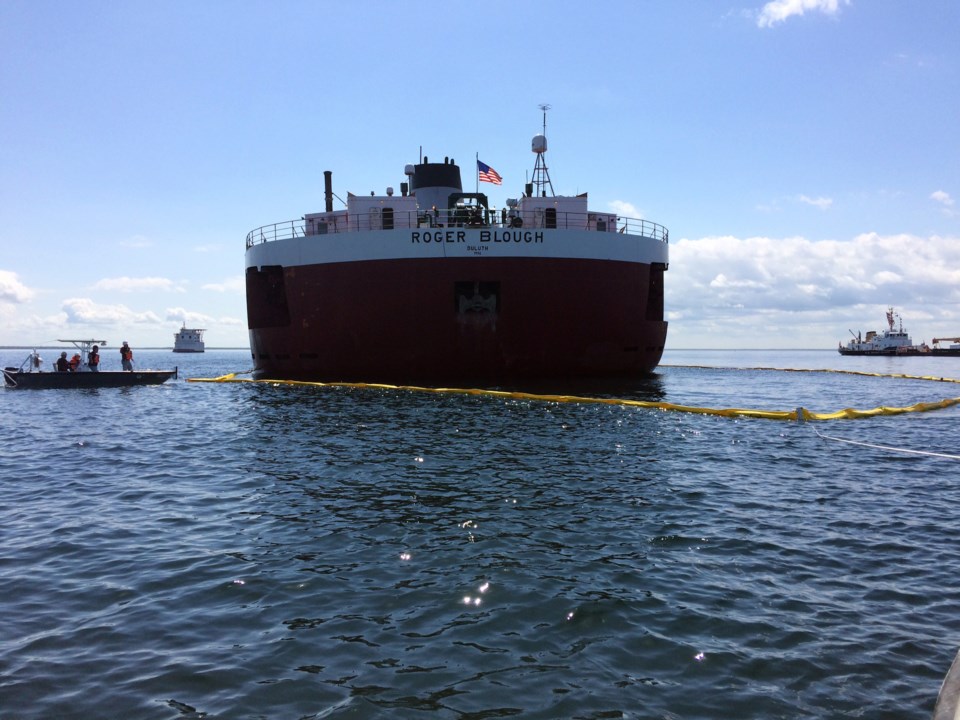As preparations are being made to remove a freighter grounded near the city’s main water intake, a spokesperson for the PUC says they are watching the situation closely.
The Roger Blough, an 858-foot lake freighter carrying a load of iron pellets, ran aground Friday on the Gros Cap Reef in Whitefish Bay.
Giordan Zin, supervisor of communications for PUC, said the vessel is grounded just 1.2 miles from the city’s main water intake at Gros Cap.
According to the Canadian Coast Guard, the vessel is currently carrying an estimated 133,000 gallons of marine diesel.
“We have a plan in place should something happen, but right now it’s business as usual,” said Zin.
Unable to comment on the environmental impact should the vessel begin to leak, Zin noted the U.S. and Canadian Coast Guards are on scene in the event of a fuel spill.
“They are professionals out there, we have confidence in what they are doing. From our point of view, it’s a wait and see situation,” said Zin.
An underwater survey of the vessel has been completed and a plan has been submitted to the U.S. and Canadian Coast Guards for the salvage of the Roger Blough.
A representative for the Canadian Coast Guard says the fuel tanks are in the rear of the vessel and not damaged, and about 4,000 feet of boom currently surrounds the Roger Blough to prevent potential spillage.
The Canadian Coast Guard says its Sault Ste. Marie operation houses their largest inventory of environmental response equipment in the Great Lakes.
Zin said he would be more concerned if something were to happen and no one was there to manage the situation.
“The ship is buoyed off, there are people monitoring it, we are in constant contact with them,” said Zin.
The water intake at Gros Cap provides the city with about half of the drinking water residents use every day.
In the event of a fuel spill, Zin said a contingency plan would be put in place which could include shutting off the main intake temporarily.
In that case, the PUC would switch over to just using the city’s wells, with the potential of reopening of the Lorna well, which has been out of service but on standby since spring of 2014.
“That’s the whole reason we have been maintaining it, in case of an emergency,” said Zin.
The four active wells which make up the other 50 percent of freshwater intake could sustain the city for some time, said Zin, before water rationing was required in a hypothetical shut-off of the Gros Cap intake.
“It’s a fluid situation. There’s so many variables, then we have to make the move. From our point of view, we’re monitoring it,” said Zin.
He added, “We are aware of it, monitoring it with a lot of interest.”
The U.S. Coast Guard and National Transportation Safety Board are currently investigating the cause of the grounding.
